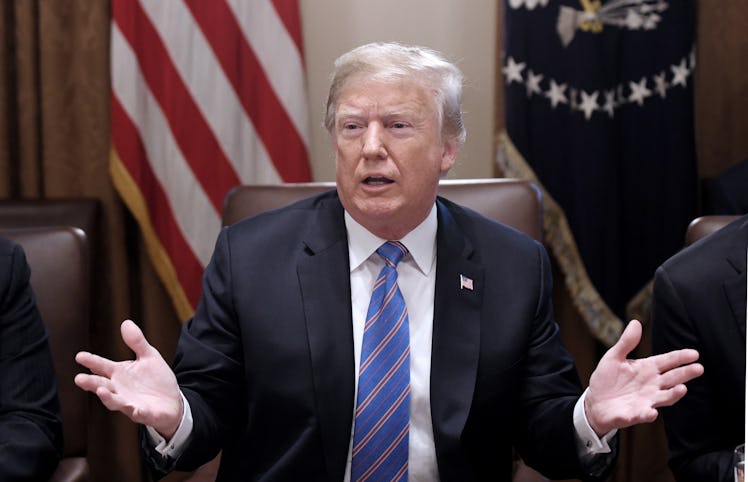
Donald Trump Thinks He's Way More Popular With Women Than He Actually Is
This is 2018, and sometimes President Donald Trump has the habit of inflating some key numbers when speaking in public or tweeting. For instance, that time he said his 2018 State of the Union was the most watched in history — it wasn’t, according to Time. Well, This time he really swung for the fences. Donald Trump said he won the women's vote in 2016, and I have some bad news for him, because he didn't.
While speaking to steelworkers in Granite City, Illinois about economic growth on Thursday, July 26, Trump claimed that he got more votes from women than Hillary Clinton did in the 2016 election, according to The Hill. He said,
But I did win that women’s vote, didn’t I? Remember, they said, ‘Why would women vote for Trump?’ Well, I don’t know but I got more than she did. That’s pretty good.
Sorry to break it to you, Trump, but you didn't. It's possible that Trump confused his numbers a bit, because while he did in fact receive 52 percent of the vote, that was only among white women. When it comes to women overall, he only received 41 percent of the female vote during the 2016 election. Which means that Clinton took the majority of women voters — not Trump.
The 2016 election isn't the only place that saw Trump come up short when it comes to approval among female voters. On July 7, the latest Washington Post-Schar School poll put Trump's approval rating among women as 32 percent positive and 65 percent negative, as opposed to 54 percent positive and 45 percent negative among men.
While that difference is rather large, it's not very surprising. When it comes to women and the issues that matter to them, Trump doesn't have the best track record. Right off the bat, Trump is serving as president in the era of movements like #MeToo and #TimesUp, while multiple women have accused him of sexual misconduct. The official White House position remains that all Trump's accusers are lying.
Even that aside, Trump has not done much to prove that he's a friend to his female constituents. In his first year as president, Trump rolled back the provision of the Affordable Care Act (ACA) which gave women access to cost-free birth control. The administration also paused an Obama-era equal pay rule requiring large companies to report what they pay workers by race and gender.
Trump has also made it very clear that he wanted to see Roe v. Wade overturned, and when Justice Anthony Kennedy retired from the Supreme Court in late June, he got his chance to try and create a SCOTUS bench aimed at making that happen. Trump ended up tapping U.S. Court of Appeals for the District of Columbia Brett Judge Kavanaugh as his pick to fill Justice Kennedy's seat, and while the decision still has to be approved by the Senate, Trump's pick has a troubling issue on reproductive rights. Last year, Kavanaugh sided with the administration's refusal to allow a undocumented teen to get an abortion, after a lower court had already approved it, and in 2015 he dissented in a case involving requirements that employers provide birth control coverage to their employees.
Trump was obviously wrong in claiming that he scored more female votes than Clinton in the election. But, let's give him the benefit of the doubt that he got the "white women" and "overall women" numbers confused. As president, he should still be aware of where he currently stands with women — because it's not looking too good.